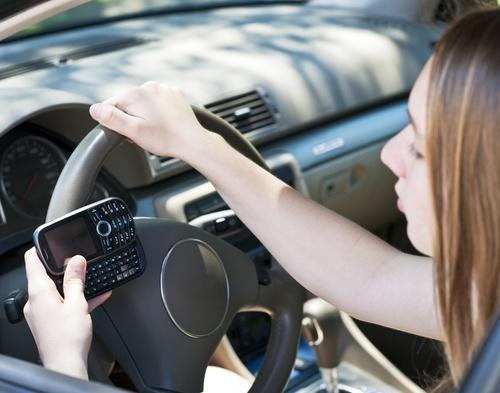A recent study conducted by the Virginia Tech Transportation Institute (VTTI) and the National Institute of Child Health and Human Development (NICHD) indicates that distractions are worst for novice drivers.
Cell phones and other portable electronic devices have become a major concern on the road, but other distractions such as reaching away from steering wheel, focusing attention at something on the side of road, and eating or drinking can also be significant hazards for new drivers.
“The increasingly high rates of secondary task engagement among newly licensed novice drivers in our study are worrisome as this appears to be an important contributing factor to crashes or near-crashes,” said study author Charlie Klauer, Ph.D., research scientist and leader of the Teen Risk and Injury Prevention Group at VTTI’s Center for Vulnerable Road User Safety, according to Virginia Tech News.
The age group most affected by these distractions was between 16 and 17, Klauer said in an email interview.
She further stated that novice drivers are likely to engage in high-risk secondary tasks more frequently over time, as they become more comfortable with driving.
“Previous research would indicate that adult novice drivers’ crash or near crash rates would be higher than experienced adult drivers but not as high as novice teen drivers,” said Klauer in email.
Ranking the Risks
The study found that the most dangerous distraction among novice drivers was cell phone dialing, with an odds ratio (risk of crash) of 8.32 percent, followed by reaching for an object (8 percent), reaching for a phone (7 percent), looking at an object along the roadside (3.9 percent), texting or using the internet (3.87 percent), eating (2.99 percent), adjusting controls other than radio or air conditioning (2.6 percent), adjusting the radio or air conditioning (1.37 percent), drinking (1.36 percent), and talking (0.61 percent).
“We don’t know what the true risk is. The primary point of this research is that we do know that risks such as dialing a cell phone and or reaching for cell phone or other objects increased risk of crash / near crash involvement by 7 to 8 times than that of an alert novice driver,” said Klauer.
“These seem pretty significant to us and if the true crash rates are this high or higher, novice drivers need to keep their eyes on the forward roadway and remain vigilant to the driving task to greatly reduce their crash occurrence,” she added.
The study was conducted based on a 1-year, 100-car study with drivers between the ages of 18 and 72 with an average of 20 years of driving experience, and on an 18-month study of 42 teens who had been driving for less than three weeks.
The study, titled “Distracted Driving and Risk of Road Crashes among Novice and Experienced Drivers,” was published in the Jan. 2 issue of the New England Journal of Medicine.
Participating authors include Bruce G. Simons-Morton, Ed.D., senior investigator with the NICHD; Marie Claude Ouimet, Ph.D., assistant professor at the University of Sherbrook in Montreal; and Suzie E. Lee, Ph.D., research scientist at VTTI.
Driver Image via Shutterstock




